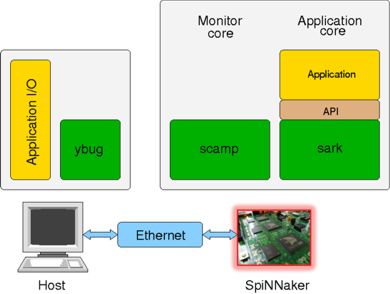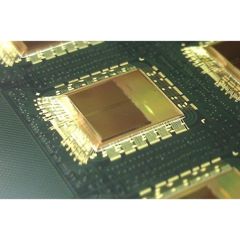| Neuromorphic Supercomputer Up and Running |
| Written by Harry Fairhead | |||
| Sunday, 04 November 2018 | |||
|
The University of Manchester's Faculty of Science and Engineering's SpiNNaker machine, made up of one million processors and designed to mimic the human brain was switched on for the first time on November 2nd. To reach this milestone has taken £15million in funding, initially from the UK's Engineering and Physical Sciences Research Council (EPSRC) and more recently from the European Human Brain Project.20 years in conception and over 10 years in construction, with the initial build starting in 2006. SpiNNaker stands for 'Spiking Neural Network Architecture', which we have encountered before in IBM's TrueNorth Rat Brain. Whereas the TrueNorth chips had been assembled into a "brain" consisting of 48 million neurons, the SpiNNaker machine is capable of 200 trillion actions per second – meaning it can model more biological neurons in real time than any other machine ever built. Unlike traditional computers, SpiNNaker doesn't communicate by sending large amounts of information from point A to B via a standard network. Instead it mimics the massively parallel communication architecture of the brain, sending billions of small amounts of information simultaneously to thousands of different destinations. Steve Furber, Professor of Computer Engineering, who conceived the initial idea for such a computer, said: "SpiNNaker completely re-thinks the way conventional computers work. We've essentially created a machine that works more like a brain than a traditional computer, which is extremely exciting. The ultimate objective for the project has always been a million cores in a single computer for real time brain modelling applications, and we have now achieved it, which is fantastic." Switching it on for the first time was no easy feat and many man (and woman) hours were devoted to the task and they even took a time lapse recording to prove it. For those interested in SpiNNaker's systems software, here are details from Manchester's Advanced Processor Technologies Research Group (APT): The SpiNNaker run-time software involves three different devices:
The diagram above shows the SpiNNaker run-time software components used to support applications:
So, what is a million-core processor computer that mimics the way a brain works used for? One of its fundamental uses is to help neuroscientists better understand how our own brain works. It does this by running extremely large scale real-time simulations which simply aren't possible on other machines. For example, SpiNNaker has been used to simulate high-level real-time processing in a range of isolated brain networks. This includes an 80,000 neuron model of a segment of the cortex, the outer layer of the brain that receives and processes information from the senses. It also has simulated a region of the brain called the Basal Ganglia - an area affected in Parkinson's disease, meaning it has massive potential for neurological breakthroughs in science such as pharmaceutical testing. Professor Furber commented: "Neuroscientists can now use SpiNNaker to help unlock some of the secrets of how the human brain works by running unprecedentedly large scale simulations. It also works as real-time neural simulator that allows roboticists to design large scale neural networks into mobile robots so they can walk, talk and move with flexibility and low power." More Information'Human brain' supercomputer with 1million processors being switched on for first time Related ArticlesIBM's TrueNorth Simulates 530 Billion Neurons To be informed about new articles on I Programmer, sign up for our weekly newsletter, subscribe to the RSS feed and follow us on Twitter, Facebook or Linkedin.
Comments
or email your comment to: comments@i-programmer.info |
|||
| Last Updated ( Sunday, 04 November 2018 ) |




